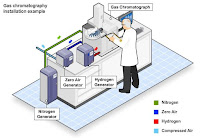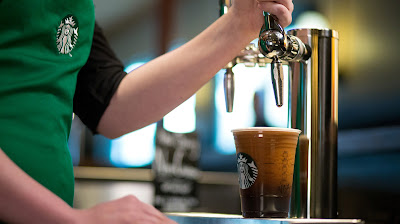When it comes to flavor, coffee purists prefer
whole beans, which retain their flavors longer than ground coffee. Yet there's
no denying the convenience factor of ground coffee, which is why it's so
popular in offices. Ground coffee has a short shelf life -- hence the push to
use airtight containers, which keep the flavors in the coffee -- and off
flavors may develop if the coffee grounds are left on the shelf too long. Some
coffee companies are trying a new trick to add shelf stability to their ground
coffee: a nitrogen flush.
How Nitrogen Flushing Preserves Coffee Grounds
Oxygen is the enemy of ground coffee: When coffee
grounds come into contact with oxygen, they go stale faster. This is why coffee
grounds are sold in vacuum-sealed containers, and why consumers are encouraged
to use airtight containers. For best flavor, coffee beans should also be stored
in dark containers (so light does not pass through).
Some amount of oxygen is produced (in the form of
CO2) as the ground coffee degasses, a naturally occurring process.
To release these gases and preserve coffee flavor, many coffee bags contain a
one-way valve. Oxygen escapes through the valve, but cannot come back into the
bag.
Some coffee companies are taking it one step
further by flushing the bag with nitrogen gas during the coffee packaging
process, which ensures that no oxygen is in the bag with the coffee where it
would cause spoilage. Nitrogen gas is heavier than oxygen, so when it is pushed
into the empty coffee bag, it displaces oxygen. The bag is then filled with
coffee grounds and sealed with no ambient oxygen in the sack. This preserves
coffee flavor.
Since nitrogen gas has no color or odor, it does
not affect the taste of the coffee. What consumers get, months later, is
grounds that are as fresh as they were the day the coffee was roasted and
ground.
While this is beneficial for the consumer,
nitrogen flushing may prevent problems at the packaging plant. Just as nitrogen
gas flushes oxygen out of the bag, so can it displace oxygen from the room. If
a leak were to occur, employees would not be able to tell (remember, the gas
has no smell, odor, or color). A leak could push so much oxygen out of the air
that staff could suffer respiratory problems, death via asphyxiation being the
worst-case scenario.
How an Oxygen Sensor Can Protect Your Employees
Since nitrogen displaces oxygen, it's easy to
detect a leak by tracking the levels of oxygen in the room. Oxygen sensors --
also known as oxygen deficiency monitors -- continually monitor oxygen levels.
As long as the room air remains stable, there's no leak. When the levels of
oxygen in the air fall to the OSHA threshold of 19.5 percent, where a health
threat is imminent, the sensor will go off. Employees will see a flashing light
and hear a loud alarm that warns of the low levels of oxygen. Staff can exit
the packaging facility without suffering adverse health effects; they also
enjoy peace of mind every day by checking the O2 monitor.
PureAire supplies coffee manufacturers with
oxygen sensors that help them offer a higher-quality product without placing
workers at risk. PureAire's oxygen deficiency monitor requires no maintenance
and calibration once installed, thanks to a hardy zirconium sensor. Once
installed, the O2 monitor will provide accurate readouts and
leak detection for 10 or more years. PureAire's oxygen deficiency monitors
function properly despite changes to barometric pressure, thunderstorms, and
other weather events. Suitable for use in freezers, basements, and other
confined spaces, PureAire's monitors perform in temperatures from 55 Celsius to
-40 Celsius.
To protect worker safety, an oxygen monitor
should be used wherever nitrogen gas is stored or used. Learn more about PureAire's
products at www.pureairemonitoring.com.













